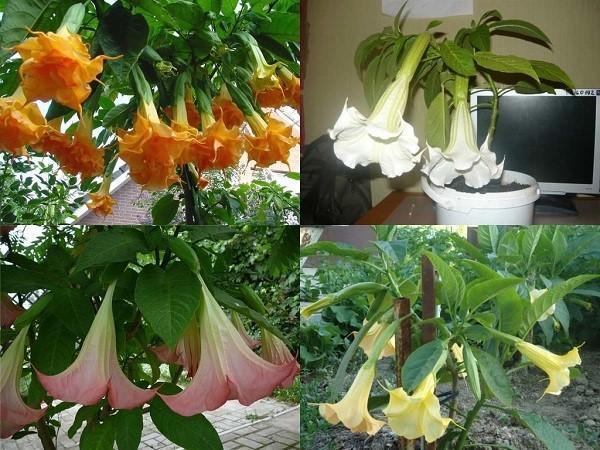Pros and cons of growing brugmansia, a selection of popular varieties
 For those gardeners who are just thinking about purchasing brugmansia, it is worth familiarizing yourself with the basic requirements of the plant, because there are some nuances of its cultivation. In addition, it will be important to determine the specific type of flower, since the variety of colors and shapes of inflorescences is simply breathtaking. So, briefly about the main information that novice growers need to know.
For those gardeners who are just thinking about purchasing brugmansia, it is worth familiarizing yourself with the basic requirements of the plant, because there are some nuances of its cultivation. In addition, it will be important to determine the specific type of flower, since the variety of colors and shapes of inflorescences is simply breathtaking. So, briefly about the main information that novice growers need to know.
Benefits of growing brugmansia
In favor of purchasing a flower, the following facts speak:
- Rapid growth... A cutting planted in February turns into a large bush by summer.
- Gorgeous bloom... Perhaps no plant has such amazing inflorescences - large, beautiful and fragrant, hanging from branches in abundance.
Some plant flaws
There are not so many disadvantages of breeding brugmansies, however, they are quite significant:
- All parts of the plant contain toxic substances, so if there are small children or pets in the house, it is better to refrain from purchasing it. Or give the flower a separate room where they have no access.
- Brugmansiya does not hibernate in open ground (with the exception of southern latitudes with warm winters). If the flower grows on the street, it must be dug up for the winter and brought indoors.
It is also worth noting that various pests like to feast on large leaf plates. But if you treat the plant with Aktara, no caterpillars are afraid of it.
Popular varieties
At home, the following types of brugmansia are most often grown:
- South American. The tall bush blooms with large white inflorescences up to 30 cm long.
- Golden. Grows as a tree with dark green elongated leaves, can reach 4 m in height. The flowers are mostly yellow, sometimes creamy pink. Differs in aroma, which manifests itself most strongly at night.
- Noticeable. Fast-growing, tall shrub with wavy leaves. The inflorescences are huge, up to 45 cm in length, painted in yellow-white-pink tones.
- Fragrant. The tallest shrub-tree (up to 5 m), which has the ability to bloom all year round in a winter garden or greenhouse. Inflorescences are yellow, with a curved corolla with five limbs.
- Bloody. It has a weak aroma, but it has increased frost resistance. Inflorescences are red, with an orange-yellow tint.
- Multi-colored. The largest-flowered variety: the length of the white bells reaches 50 cm. In adult large plants, the flowers acquire a peach hue. This brugmansii fruits are not tied.
- Volcanic. It has salmon inflorescences drooping down. A rare variety.